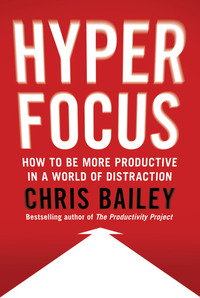You need to sign in or sign up before continuing.
Take a photo of a barcode or cover
Wel aardig maar veel herhaling, en beetje wollig
Steals a medical term from the ADHD community and tries to make it a productivity thing for neurotypicals. Incredibly insensitive. Also, buys into time optimization ethos that supports capitalism.
Graphic: Ableism, Cultural appropriation, Classism
funny
informative
fast-paced
informative
fast-paced
دارم به همه کتاب ها سه میدم چرا؟:)))
واقعیتش اینه که یه سری راهکار های خوبی برای توجه کردن یا درست پخش کردن توجه داشت.
حالا برا یکی مثل من که پاتولوژیک مشکل عدم تمرکز دارم شاید همه شون جواب نده یا اصلا فرق کنه، ولی کلا چیزهای غلطی زیاد نمیگفت.
واقعیتش اینه که یه سری راهکار های خوبی برای توجه کردن یا درست پخش کردن توجه داشت.
حالا برا یکی مثل من که پاتولوژیک مشکل عدم تمرکز دارم شاید همه شون جواب نده یا اصلا فرق کنه، ولی کلا چیزهای غلطی زیاد نمیگفت.
Setting myself a theme of being more consistent and intent with my time, I thought I'd give this book a try. There are some helpful tools and lessons in here. However, it is drawn out considerably, and probably would've been just as helpful to simply bullet point the suggestions.
informative
reflective
medium-paced
informative
inspiring
medium-paced
While a bit repetitive it was extremely practical and I have already started implementing ideas. I was inspired by the concepts.



